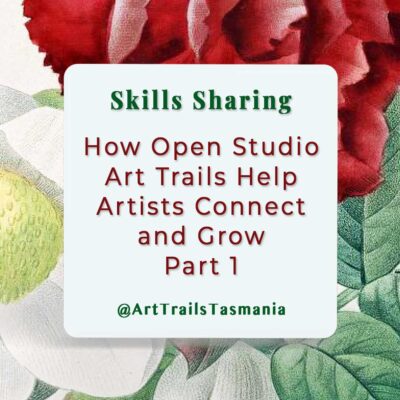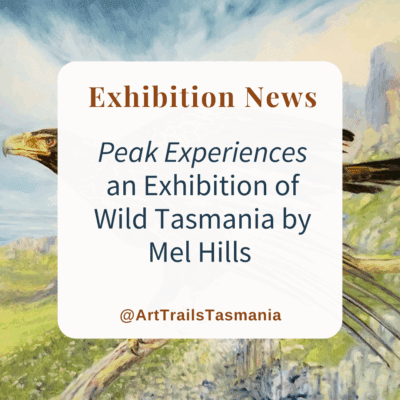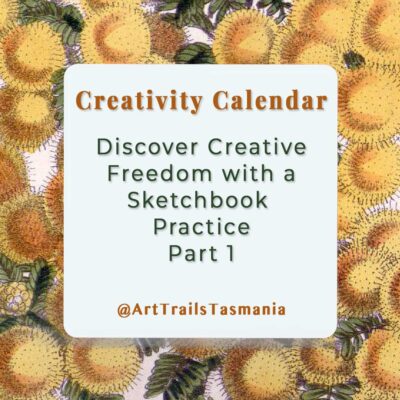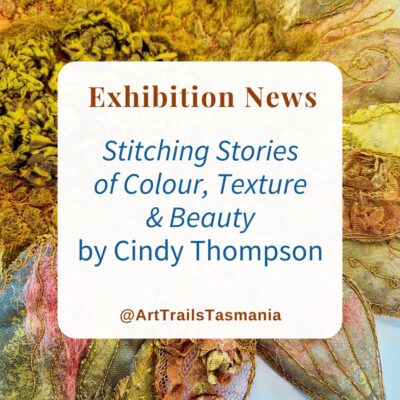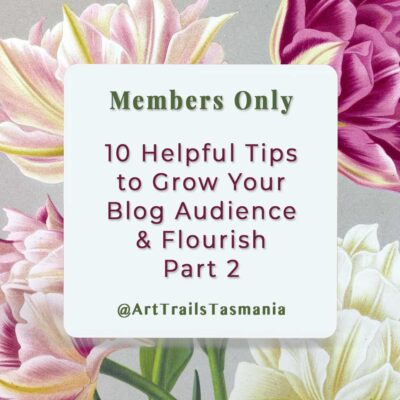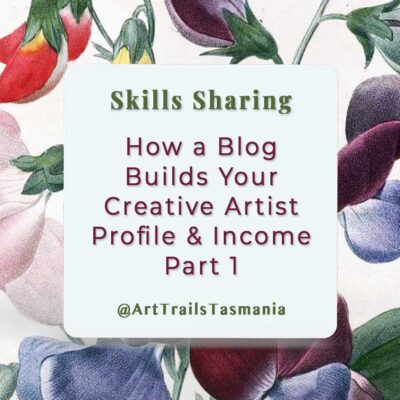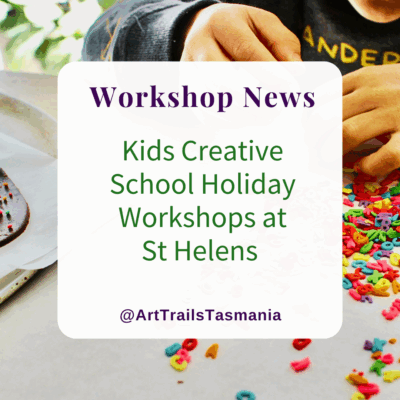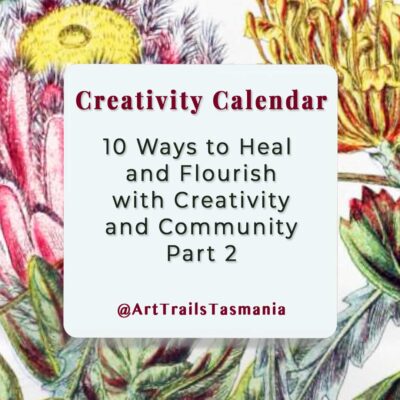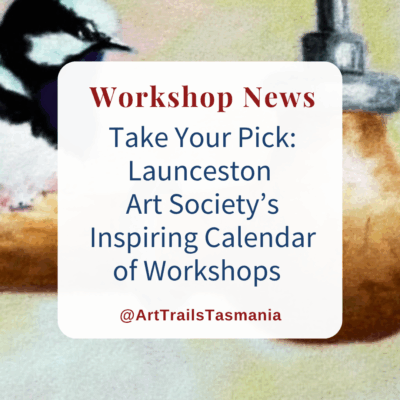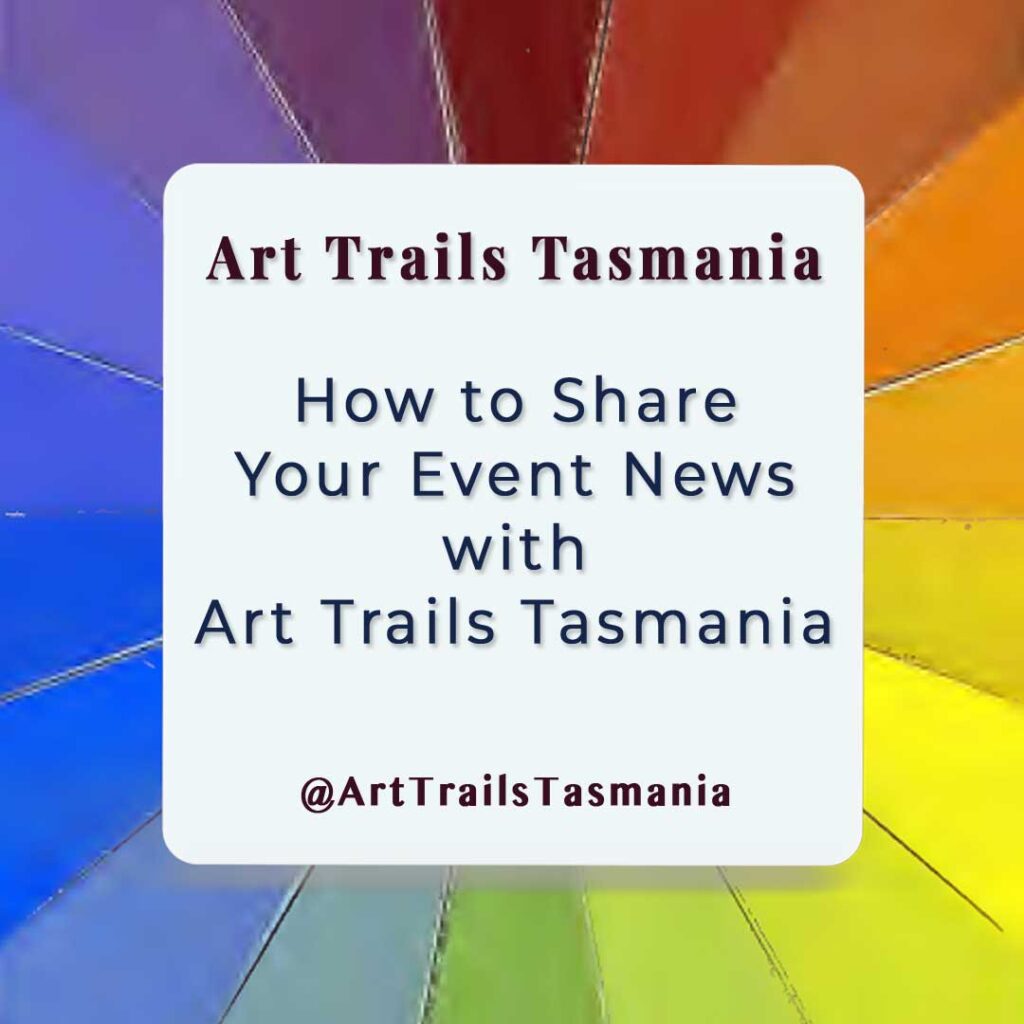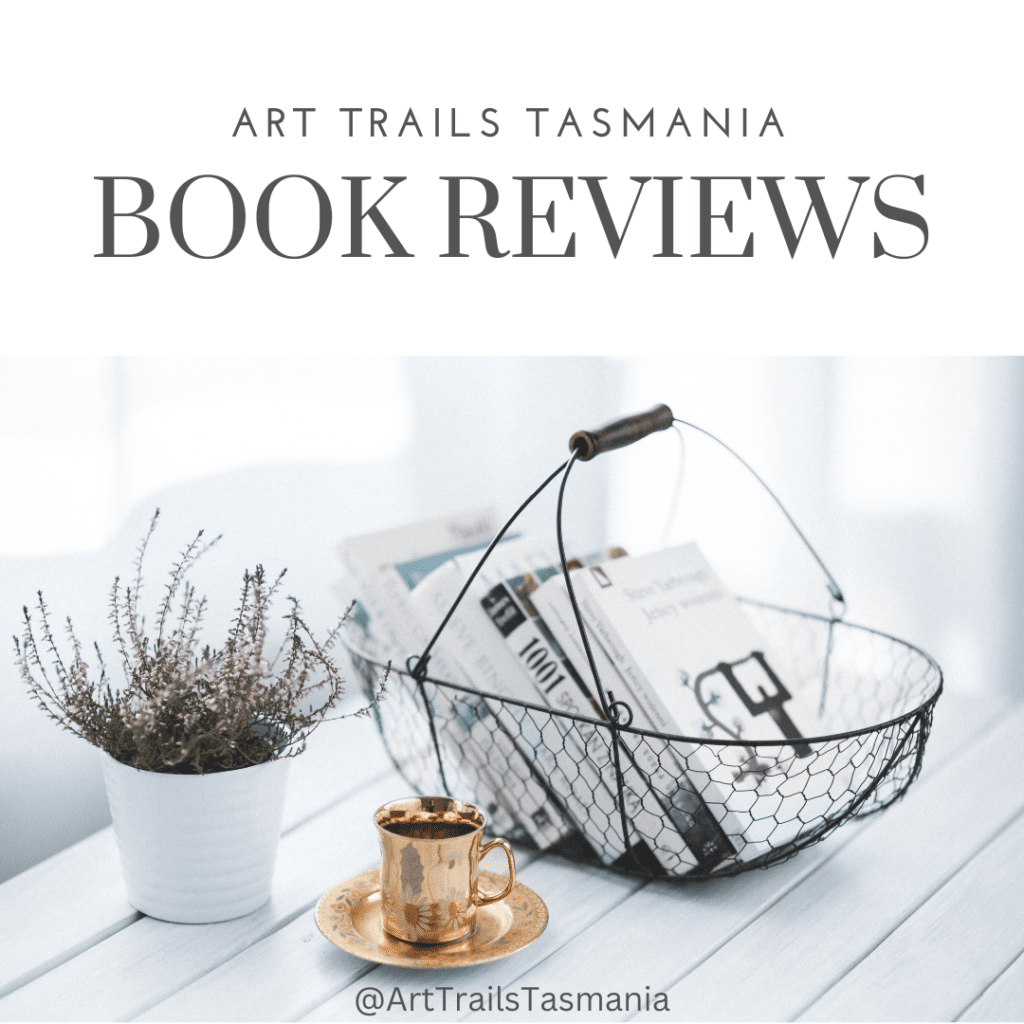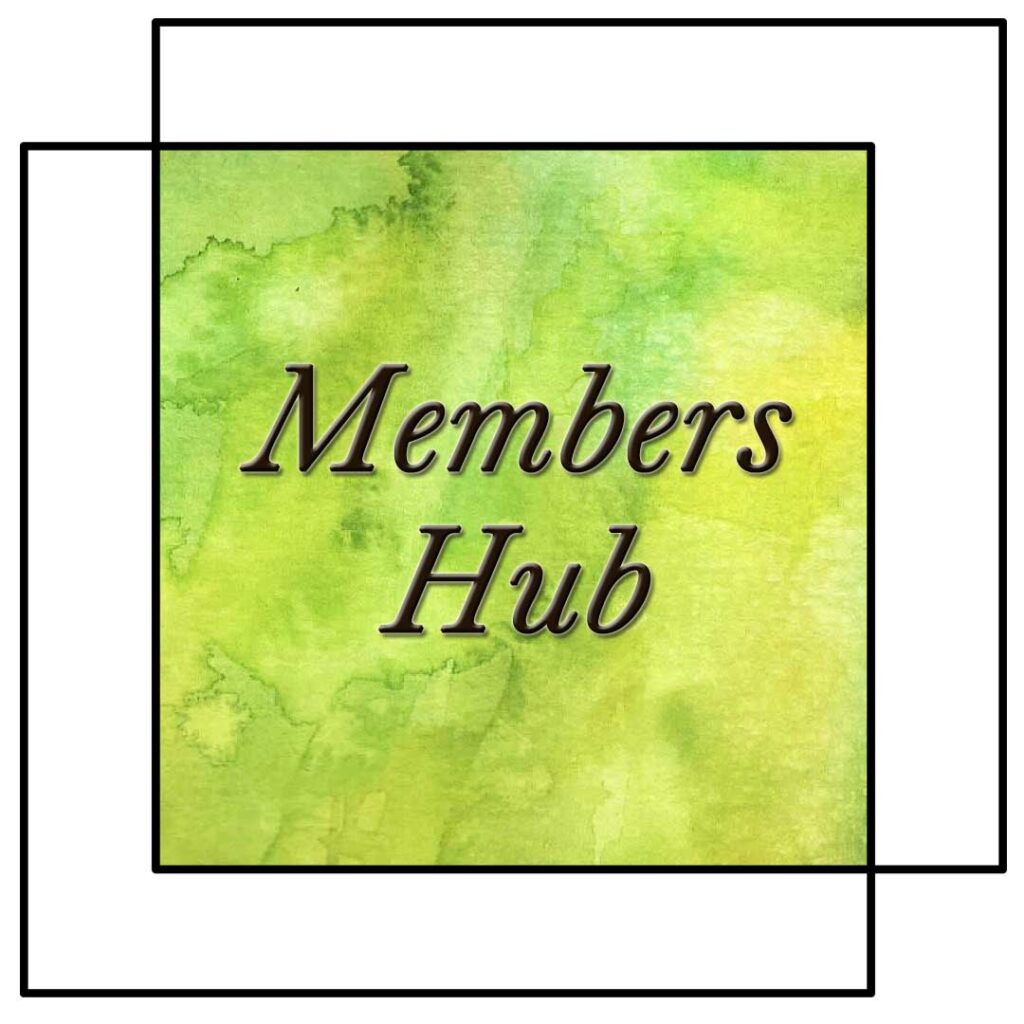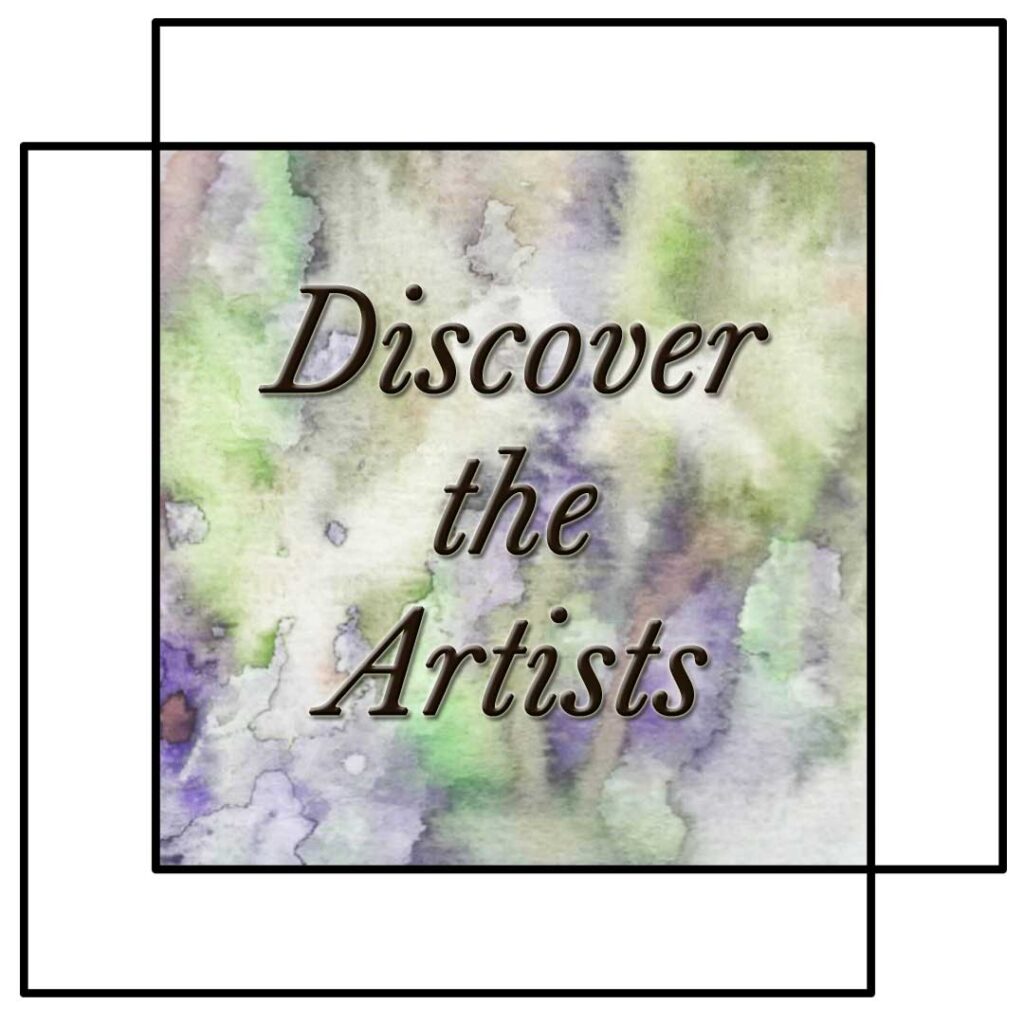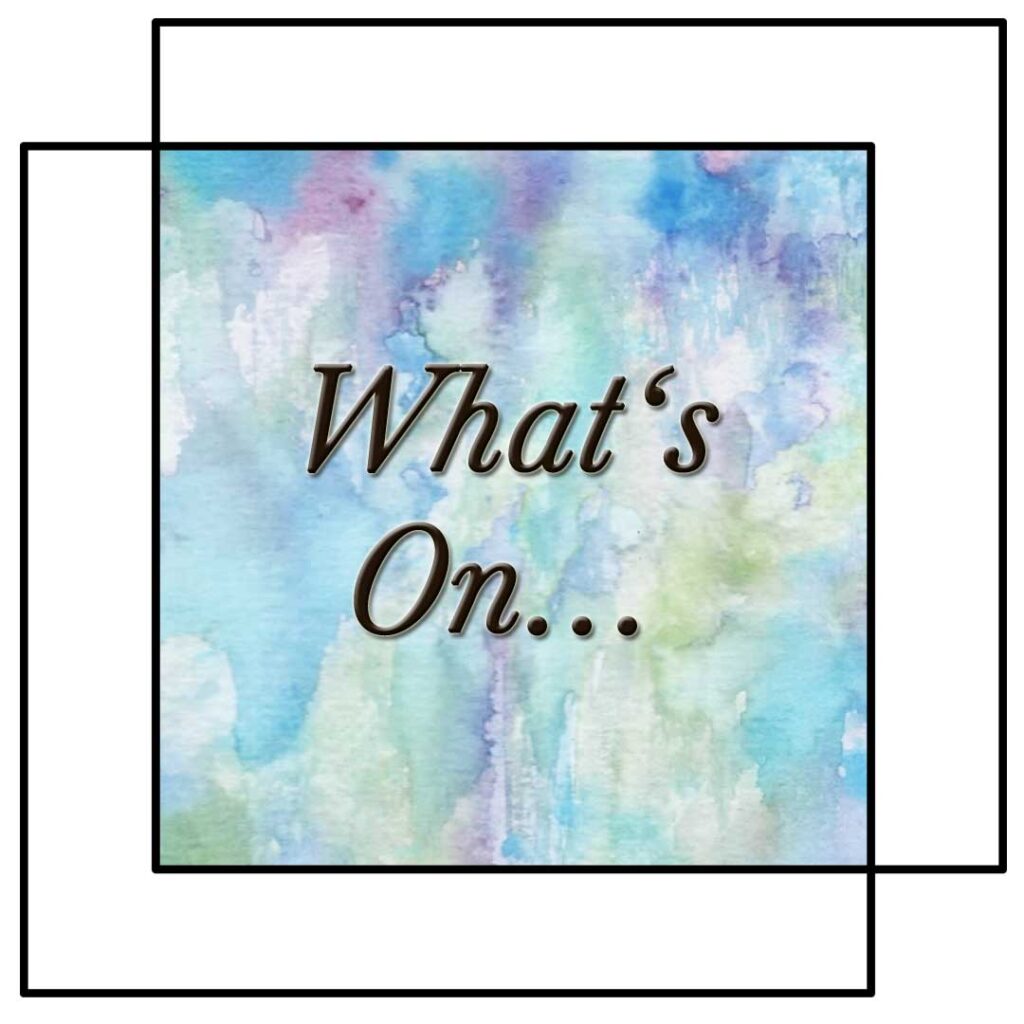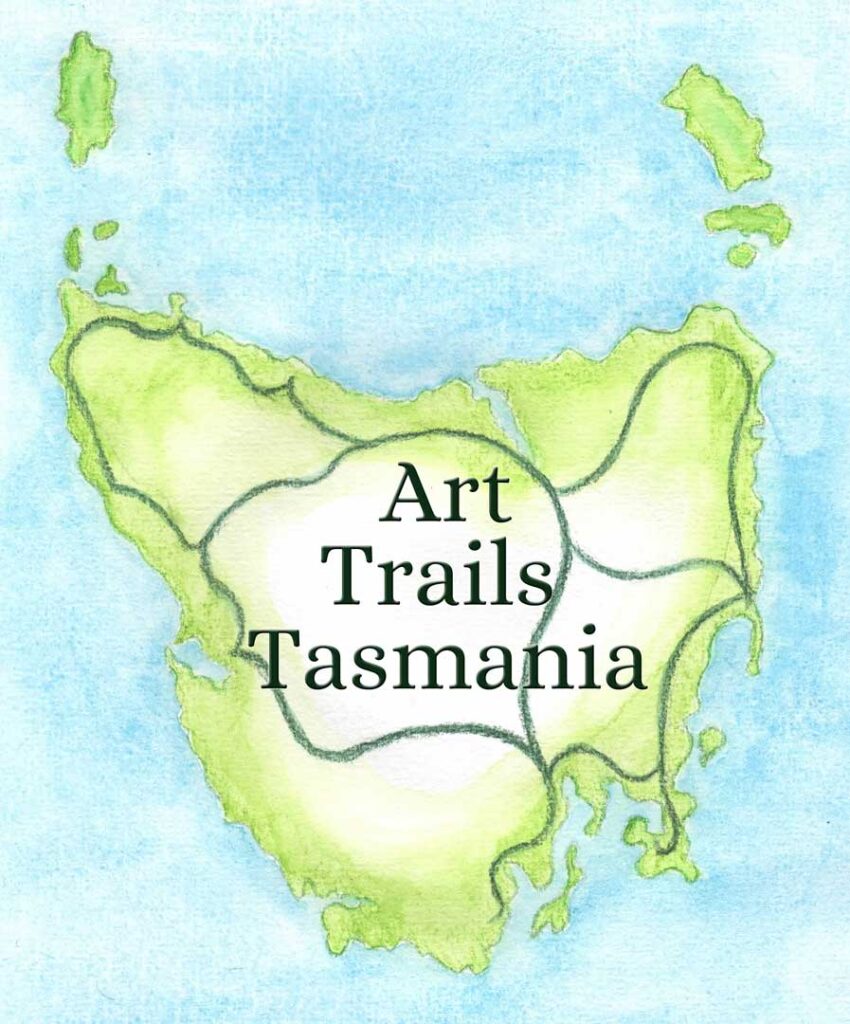12 Inspiring Ideas for Your Intentional Creative Experimentation
Welcome to part 2 of our Intentional Creative Experimentation practice series!
In the first instalment, we explored the concept of intentional creative experimentation, which is all about giving yourself the freedom to play, try new things, and embrace the process of discovery with purpose.
It’s not about creating perfect, finished pieces but about exploring and expanding your creative boundaries.
This practice encourages you to step out of your comfort zone and embrace curiosity, leading to new ideas, techniques, and skills.
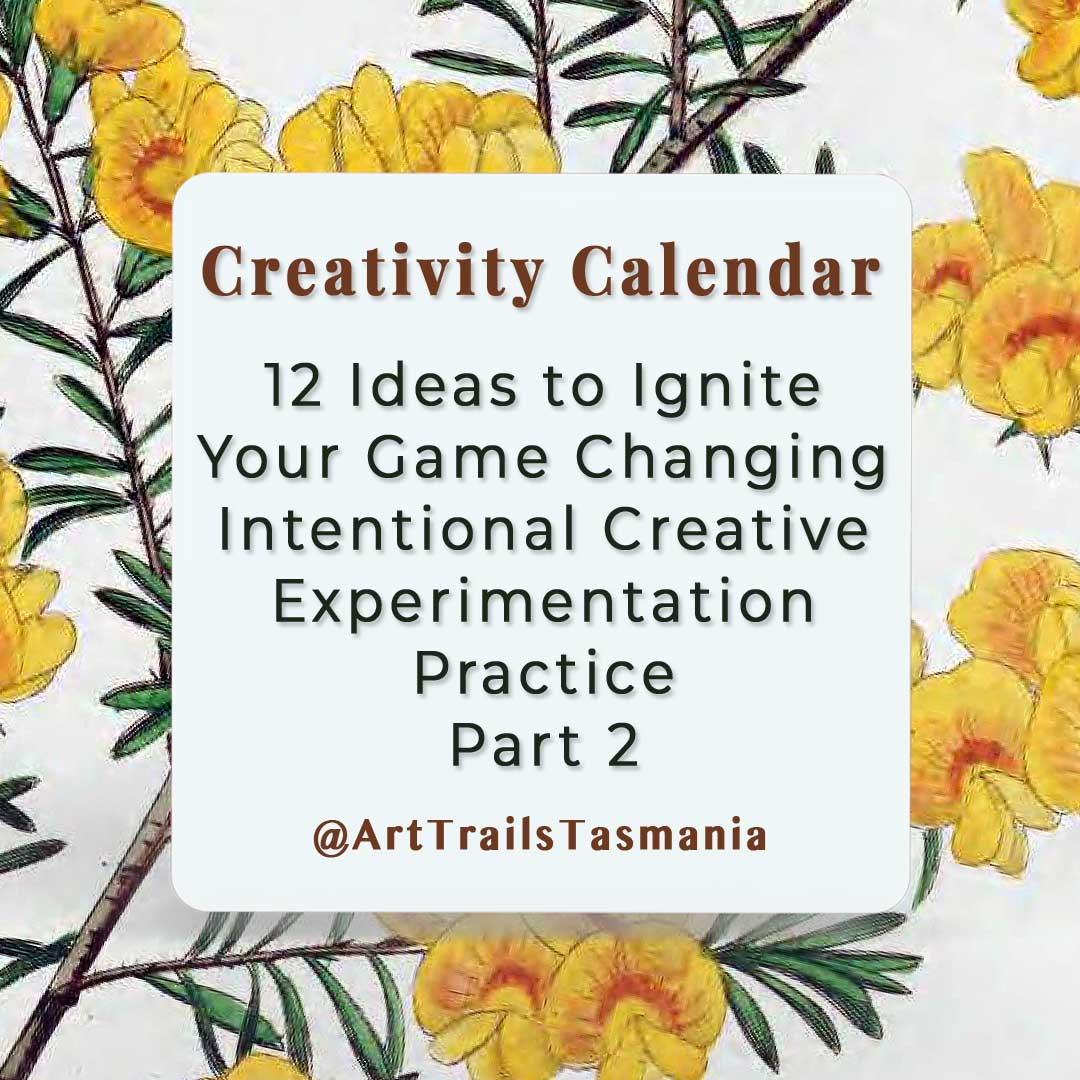
12 Intentional Creative Experimentation Ideas to Get Started With
In this blog post, we’re diving into 12 exciting ideas to explore in your own intentional creative experimentation practice.
From working with new materials to playing with texture or experimenting with scale, these ideas will help you stay inspired and spark fresh creativity.
This is being based on 12 ideas so you can explore a different one every month for a year if you like, whether it is a calendar year, from birthday to birthday or any other start date that works for you.
Plus, you can design your own weekly experiment base on the month’s theme. For example, if you’re trying a new medium, mix in different technicals or tools each week. You have the freedom to choose what you want to experiment with playfully and joyfully.
Or, you can just pick out which ones appeal to you the most and dive into them.
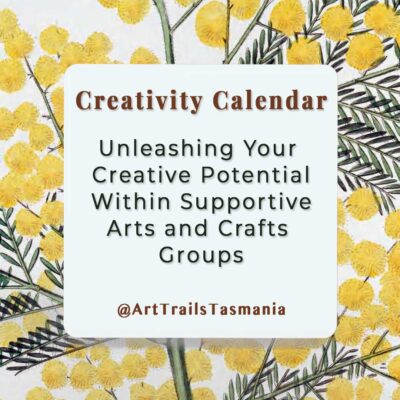
Unleashing Your Creative Potential Within Supportive Arts and Crafts Groups
How to unleash your creative potential within the welcoming and supportive community of arts and crafts groups and flourish creatively wherever you are.
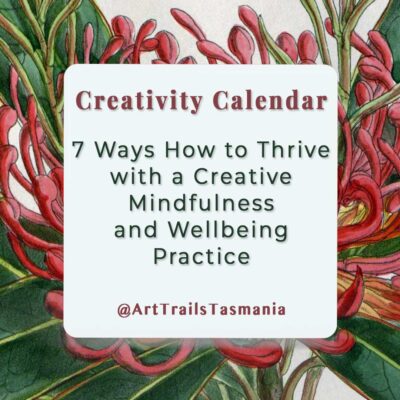
7 Ways How to Thrive with a Creative Mindfulness and Wellbeing Practice
Exploring creative mindfulness practices in 7 ways for mental health, how to embrace it and 7 fun daily mindful rituals so you can thrive artistically.
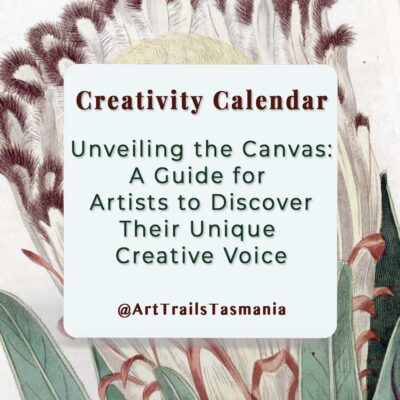
Unveiling the Canvas: A Guide for Artists to Discover Their Unique Creative Voice
Embark on the journey to find your creative voice with tips on self-discovery, techniques to explore and practical insights with Art Trails Tasmania.
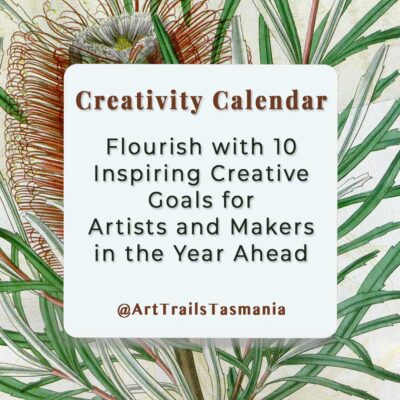
Flourish with 10 Inspiring Creative Goals for Artists and Makers in the Year Ahead
Elevate your artistic journey! Discover 10 inspiring creative goals for artists and makers in the coming year with Art Trails Tasmania. Unleash your creative potential now!
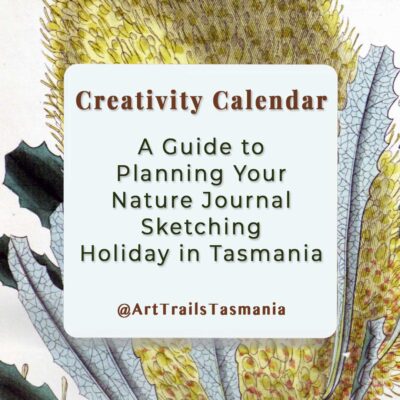
A Guide to Planning Your Nature Journal Sketching Holiday in Tasmania
Immerse in Tasmania’s natural beauty with our guide to nature journal sketching holidays. Capture the essence of the island’s landscapes.
My Intentional Creative Experimentation Sketchbook
A great way to capture and reflect on your journey is by documenting your experiments in a sketchbook.
Not only will this help you track your progress and growth, but it will also become a treasure trove of ideas, discoveries, and new techniques to revisit whenever you need a creative boost.
There are all manner of sketchbooks and some are particularly adaptable to mixed media with their spiral binding, while others are more suited for dealing with a lot of water.
You may find that the best sketchbook for your purposes is one that you are happy to get started in.
So often we hold back from using the “precious” sketchbooks because of the inner “perfectionism” gremlins.
Stay focused on what you want to achieve with this intentional creative experimentation practice and pick the sketchbook that gives you joy to get started.
So, grab your sketchbook and let’s dive into these 12 ideas to fuel your creative exploration and growth over time. Happy experimenting!
12 Ideas for Your Intentional Creative Experimentation Practice
Here are 12 ideas to inspire your intentional creative experimentation practice.
Each one is designed to spark curiosity, build skills, and most importantly—let you enjoy the process of playful exploration!
1. Try a New Medium
Swap your usual tools or materials for something different. If you’re a painter, experiment with ink or pastels. If you’re a textile artist, try paper collage.
Experimenting with a new medium is a great way to refresh your creative practice. If you’re used to painting with acrylics, try switching to watercolours, pastels, or even ink for a different experience.
The change in tools and textures forces you to think and work differently, sparking fresh ideas and unexpected results.
For textile artists, consider paper collage, working with mixed media, or even incorporating paints or inks into fabrics.
Exploring new mediums not only pushes you out of your comfort zone but also helps you discover techniques and processes that you may fall in love with.
There’s no pressure to master the medium right away—it’s all about the playful exploration and seeing where it takes you.
Even if it feels awkward at first, you’ll gain a new perspective on your usual practice and learn valuable skills that could inspire your next project.
2. Mix Unlikely Colours
Use colours you wouldn’t normally pair together. Challenge yourself to create a small piece with an unexpected palette.
Colour is one of the simplest yet most powerful ways to experiment creatively. Instead of reaching for your usual palette, challenge yourself to mix unlikely colour combinations—ones you’d normally shy away from.
Try pairing bright oranges with soft pinks, or earthy greens with vivid purples. Even colours that seem “clashing” can work beautifully when you explore their balance.
To start, create small swatches, patterns, or abstract pieces to see how these colours interact. This kind of playful experimentation can help you break out of colour habits, discover surprising harmonies, and add fresh energy to your work.
You might even stumble across a new “signature palette” or an idea for a bigger project. The joy is in letting go of what feels “safe” and allowing yourself to embrace bold choices.
Mixing unexpected colours is a brilliant reminder that creativity thrives when we take risks.
3.Work with Limited Supplies
Pick just three tools, materials, or colours and see what you can create. Constraints often lead to surprising results.
Sometimes, less really is more! Limiting yourself to just three tools, materials, or colours can stretch your imagination and inspire creative breakthroughs.
For example, if you’re a painter, challenge yourself to use only two brushes and three colours to create a piece.
If you’re into collage or mixed media, choose a limited selection of papers or textures. By reducing your options, you’re forced to think resourcefully, making each decision more deliberate and thoughtful.
This can lead to surprisingly original results. Working with constraints also removes the overwhelm of endless choices, allowing you to focus on experimenting with what’s in front of you.
It’s an excellent exercise for shaking up your creative habits and rediscovering the magic of simplicity.
You’ll often find that these limitations help you develop new skills and ideas you might not have explored otherwise. Plus, it’s a brilliant way to use up those supplies gathering dust!
4. Create with Your Non-Dominant Hand
It’s messy, it’s fun, and it frees you from the pressure of perfection.
Creating with your non-dominant hand is a playful way to break free from perfectionism and discover a looser, more intuitive style.
It’s meant to be messy, so let go of the need for control and enjoy the process. Whether you’re drawing, painting, or stitching, this experiment encourages you to focus on the act of creating rather than the outcome.
You’ll often find surprising results—lines are wobblier, shapes are more organic, and the results have a charming, raw quality.
This approach is perfect for reconnecting with the joy of making, helping you embrace imperfection and see your craft in a fresh, lighthearted way.
5. Incorporate Found Objects
Use recycled materials or objects from nature like leaves, fabric scraps, or old magazines in your work.
Using found objects in your art and craft projects is a wonderful way to add texture, meaning, and sustainability to your work.
Gather items like fallen leaves, twigs, fabric scraps, old magazines, or bits of packaging and see how they inspire you.
These materials can be collaged, painted, stitched, or transformed into something new entirely. By working with what’s around you, you’ll start to see creative potential in everyday items.
Found objects bring unique character to your projects and often tell a story. It’s a brilliant way to experiment without needing new supplies—just curiosity and a willingness to play!
6. Play with Scale
Take something you normally make small and make it BIG, or vice versa.
Switching up the scale of your work can completely transform your creative process. If you usually work small—like detailed sketches, embroidery, or jewellery—challenge yourself to go BIG.
Use larger canvases or sketchpads, oversized tools, or bold strokes to create something impactful.
Conversely, if you tend to work large, shrink things down and focus on intricate, small-scale pieces.
Playing with scale helps you see your craft from a new perspective and encourages you to adapt your techniques.
It’s fun, refreshing, and often leads to creative breakthroughs. Changing the size of your work helps shake up routines and opens up exciting new possibilities.
7. Recreate “Mistakes” on Purpose
Did a previous project surprise you? Try to recreate that effect intentionally.
We’ve all had those happy accidents—a splash of paint, a smudge, or an unintended stitch—that turned out to be surprisingly beautiful.
Instead of dismissing it as a fluke, try recreating the effect intentionally.
Was it a texture, a colour mix, or a layering accident that caught your eye? Take time to explore it further, tweaking and experimenting until you understand how it happened.
Recreating mistakes teaches you to see unexpected results as opportunities and gives you the confidence to incorporate them into future projects. Sometimes, the best creative breakthroughs come when you embrace imperfections and turn them into something magical.
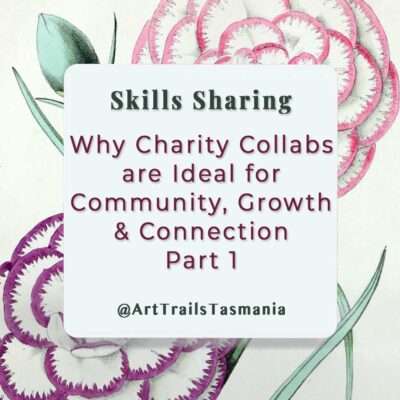
Explore Charity Collaborations for Community, Growth and Connection Part 1
Here’s why you should boost your art career & artist profile with Charity Collaborations. Support good causes, gain exposure, & connect with like-minded audiences.
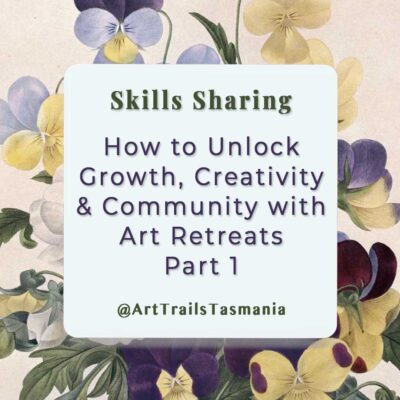
How to Unlock Growth, Creativity and Community with Art Retreats Part 1
Discover how to run successful art retreats that boost creativity, income, & connections. Part 1 of a 2-part series with practical tips for artists by Art Trails Tasmania.
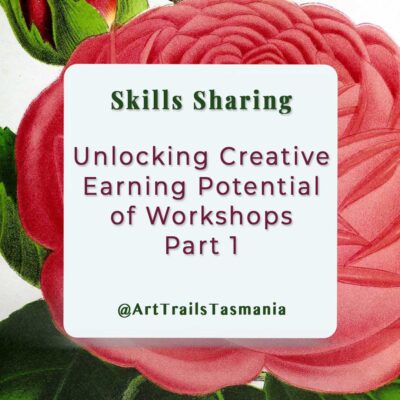
Unlocking Creative Earning Potential of Artist Led Workshops – Part 1
Part 1 on how to have financially successful artist-led workshops delves into what’s involved, the power of a calendar of workshops & the value of doing them.
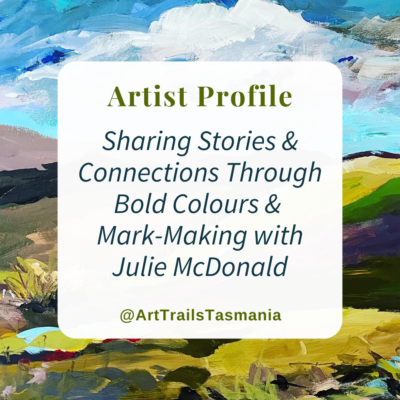
Bold Colours and Mark-Making with Julie McDonald
Thriving with bold colours, mark-making, creatively challenging herself artist Julie McDonald is coming into her own as she honours her muse.
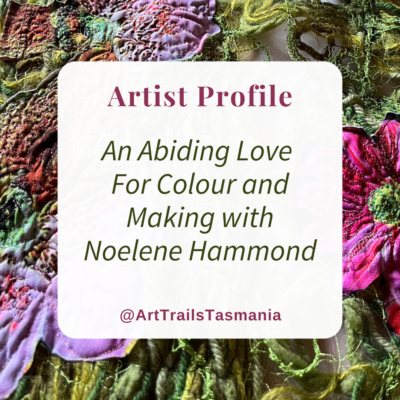
An Abiding Love for Colour and Making with Noelene Hammond
Noelene Hammand’s love of colour began in art galleries. Now, from her studio by the Tamar, she creates vibrant works with wool, beads, and bold textiles.
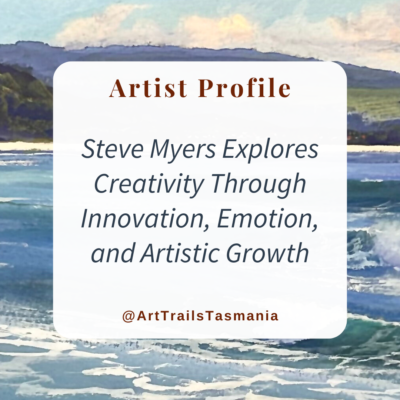
Steve Myers Explores Creativity & Artistic Growth
Meet Steve Myers as he explores creativity, innovation, emotion and artistic growth in his Art Trails Tasmania Artist Profile.
8. Experiment with Texture
Layer, scrape, emboss, or stitch—find ways to add dimension to your work.
Adding texture is a brilliant way to bring dimension and interest to your work, whether you’re a painter, textile artist, or ceramist.
Play with layering techniques—try scraping paint, embossing paper, stitching fabric, or combining different materials for tactile effects.
Use unconventional tools like sponges, palette knives, or even cardboard to create marks and patterns.
Think about how textures can tell a story or evoke a feeling. Experimenting with texture encourages you to step beyond flat surfaces and explore how materials interact.
There’s so much joy in discovering what happens when you push, pull, or layer creatively—let your hands lead the way!
9. Set a Timer
Give yourself 10 minutes to create something. Quick experiments loosen you up and build creative energy.
Setting a timer for 10 minutes is a fantastic way to shake off creative pressure and get those ideas flowing.
When the clock starts, focus on creating something quickly—no overthinking, no worrying about the outcome.
It could be a small sketch, a collage, a thrown pot, or a few strokes of paint. Working against the clock forces you to trust your instincts, loosen up, and enjoy the process.
You might be surprised at how much you can accomplish in such a short time! Quick experiments like these build creative energy, helping you move past blocks and rediscover the playful joy of making.
10. Work Backwards
Start with the final step in your process and work in reverse to see what happens.
Working backwards can shake up your creative routine and open the door to exciting discoveries.
Start with the final step of your process—maybe a finished detail, varnish, or final stitch—and work in reverse.
How would you get to that point? For example, if you’re a painter, begin with highlights or fine lines before layering the background. If you’re a textile artist, try adding embellishments first and build around them.
This playful reversal encourages fresh thinking and can uncover new techniques or ideas. Working backwards removes predictability, letting you approach your craft with curiosity and see the creative process in a new light.
11. Layer Unrelated Techniques
Combine two techniques that don’t normally “go together”—like painting over embroidery or stitching on paper.
Combining unrelated techniques is a brilliant way to experiment and create something unique. Why not try painting over embroidery, stitching on paper, or layering collage with ink washes?
These unexpected combinations can spark new ideas and push your creative boundaries. By mixing techniques that don’t “belong” together, you allow yourself to play without rules or expectations.
The results might be quirky, surprising, or even beautiful—but they will always teach you something.
This approach also encourages resourcefulness, helping you see your tools and materials in new ways. Layering different processes can bring rich textures, depth, and a sense of magic to your work.
12. Reimagine Old Work
Take a piece you’re not happy with and give it new life. Paint over it, cut it up, or transform it into something else entirely.
We all have unfinished or unloved pieces hiding away, but they don’t have to stay forgotten. Take an old piece and reimagine it—paint over it, cut it into smaller sections, collage onto it, or add new elements like stitching or texture.
Sometimes, transforming what didn’t work initially can spark fresh inspiration and lead to something entirely new.
Reworking old projects also removes the fear of “ruining” something because you’re giving it a second chance. It’s liberating, playful, and a great way to learn from what you’ve already created. You might find that reimagining these pieces unlocks unexpected ideas or techniques.
Remember, these experiments don’t have to result in finished pieces. The joy comes from the process and the discoveries you make along the way.
Explore Your Creativity
Have these ideas sparked some of your own? Maybe with your existing art and craft supplies?
Maybe in collaborating with a creative friend on a theme? Be sure to capture these unique ideas in your creativity journal so you can explore them.
Enjoy the creative exploration!
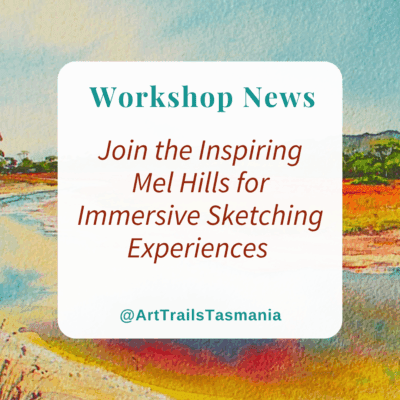
Join the Inspiring Mel Hills for Immersive Sketching Workshop Experiences
Be part of the immersive nature journaling and sketching on location workshop with popular watercolour teacher and wildlife artist Mel Hills.
Read the Latest Blog Stories and Flourish…
How Open Studio Art Trails Help Artists Connect and Grow Part 1
How Open Studio Art Trails Can Boost Your Creative Career Open Studio Art Trails invite the public into the heart of your creative world, offering an authentic glimpse behind the scenes. For artists and makers, they are a chance to connect directly with audiences,...
“Peak Experiences” an Exhibition Inspired by Wild Tasmania by Mel Hills
Explore the Mel Hills Exhibition "Peak Experiences" Step into a world of misty peaks, glinting waterfalls and alpine wildflowers as Mel Hills unveils her long-awaited mountain celebration series. Inspired by Tasmania’s iconic wilderness these breathtaking paintings...
Discover Creative Freedom Through a Sketchbook Practice Part 1
Nurturing Creativity Sketchbook practice is a creative habit that nurtures confidence, curiosity and exploration, offering artists and crafters a space to play without fear or pressure. This blog story is Part 1 of a two-part series exploring the creative...
Stitching Stories of Colour, Texture and Beauty by Cindy Thompson Exhibition
Textile Artist Exhibition "Stitching Stories" will be exhibited at Sheffield Art Gallery for two months, in August and September. The exhibition will show Cindy's colourful work encompassing many different textile art techniques. There are many items for sale as well...
10 Helpful Tips to Grow Your Blog Audience and Flourish Part 2
Unlocking the Power of Your Blog Unlock the true potential of your creative journey with this blog, the exciting Part 2 in our series. Following on from How a Blog Builds Your Creative Artist Profile Part 1, this instalment offers fresh tips to sharpen your blogging...
How a Blog Builds Your Creative Artist Profile and Income – Part 1
How A Blog Can Make All the Difference A blog is a powerful tool for artists, makers, and groups looking to grow their creative profile and support income-generating activities. It helps promote exhibitions, sell work online, attract workshop bookings, and showcase...
Kids Creative School Holiday Workshops at St Helens
Calendar of Creative Kids Workshops at St Helens Creative school holiday workshops for kids aged 8–12 at Jane Seychell Gallery, St Helens. Led by professional artists, children can paint a ceramic plate, learn to draw, or decorate cupcakes. All materials included and...
10 Ways to Heal and Flourish with Creativity and Community Part 2
10 Nurturing Paths to Creativity Creativity has been both my refuge and my guide in these tender months of grief and exhaustion. This is Part 2 of a two-part series, where I continue to explore how creativity offers quiet pathways to healing when life feels undone. ...
The Launceston Art Society Calendar of Workshops
The Latest Calendar of Workshops with the LAS The Launceston Art Society is delighted to share with you an inspiring calendar of workshops! From pastels to mixed media to acrylics to oil painting, these workshops are all about developing your skills, whether they're...
Read What Our Members Say About Belonging
Join the growing, supportive artists community today and have your Artist story told here.
Belinda is doing a great job creating a professional looking artist hub online. Check out the profile I posted recently to see how well she does them. To all my artist friends let’s help make this THE go to place to discover local artists.
You won’t regret joining Art Trails Tasmania . It’s a welcoming community for creatives at any career stage.Becoming an Art Trails Tasmania member wasn’t a hard decision for me to make as it’s such a wealth of knowledge and support.Being member provides a quality way to showcase your creative endeavours and it’s quickly growing in reach.
We operate a home based picture framing business and recently joined Art Trails Tasmania as a means to giving us exposure to the wider artist community. We have almost immediately seen increase in activity thru our online sites, which I am certain will lead to more opportunities to grow our business.

